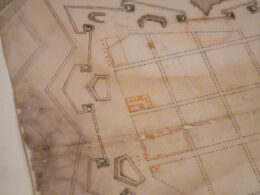We catch up with artist Nathan Portelli ahead of his debut solo exhibition Id-Diżappunt (The Disappointment). Curated by Melanie Erixon, the exhibition opens today at il-Kamra ta’ Fuq in Mqabba.
Portelli’s tongue-in-cheek collection revolves around childhood disappointment and includes, for example, a series of melting ice creams: some even depict the moment an ice cream cone crashes to the ground — an early childhood ‘tragedy.’ With these works, the artist highlights poignant parallels between his memories of childhood disappointments and the letdowns of adulthood. For Portelli, these are primarily the overdevelopment and destruction of the countryside on Gozo, and the loss of Malta’s architectural heritage and village identity. He prompts us to reflect on how our priorities shift over time and to focus on what truly matters for the future — before it is too late.
Id-Diżappunt is all about Malta and Gozo.
Which Maltese motifs have you chosen to use and why?
There are three dozen ġbejniet featuring in this exhibition; a few of which lie on an imprinted ħasira that I have found discarded at a construction site. The ġbejna is first and foremost a personal nostalgic trigger as I used to watch my nanna making them as a child. Her cheeselets were highly sought-after by locals! The ġbejniet, which as a kid I would unsuccessfully attempt at forming with a mixture of soil and water that obviously became brittle once dried out, I have now turned into cement! Most of my cheeseletsare presented in an almost melted state – representing the rapid disintegration of the Maltese identity. Also, the ġbejna (now protected by the European Union)fits very well in my ongoing focus on the identity of a nation in the context of its challenges.

Another familiar motif is the patterned tile, particularly the outdoor cement type traditionally found adorning the Maltese zuntier or the bankina. These tiles, salvaged from yet another construction site and imprinted on fresh cement, present a fantastic play of light and shade – giving life to the pattern created when put jointly – serving as a ‘fingerprint’ of a collective identity that no longer exists.
These works present my childhood letdowns echoed onto the present ones in the context of the rapid transformation my homeland is currently going through, particularly due to its heavy urbanization. My dropped ice creams symbolize the disappointment in having my youthful dreams and expectations for my country extinguished. They can also be seen as a symbol of missed opportunities if you like. I used to fantasize about my dream utopia – a land of harmony, tranquility, clean waters, pure air, and of course Mediterranean colourful houses!
Another work entitled ‘ġennaINFERN’ (‘heavenHELL’) represents not only the obvious disappointment from an environmental point of view but also a spiritual reflection on the journey of the earthly body from beginning till end. As a child, the disappointment from this game would arise after plucking all the petals of the Lelluxa flower (Crown Daisy) and the final petal determines Hell as your eternal fate.
How do the disappointments of adulthood compare to those of childhood?
I am grateful to have experienced a colourful childhood. The garden was (and still is) my paradise while the valley was the universe. It was here where I spent most of my time playing in/with nature.
The almost traffic-free environment meant that we could ‘own’ the street and we played mostly barefoot with absolutely zero regards to time! We only stopped playing when we got peckish, and that would usually indicate it was ice cream time – if the local mini-market was open.

My childhood disappointments might seem trivial today; however, they were still disappointing back then. The child’s innocent and forgiving soul made it easier and quicker to forget and move on. As an adult – easier controlled by pain and emotions – life’s inevitable challenges feel more intense and potentially scarring.
On a local level I now feel disappointed with the fast degradation of the quality of life that brings with it an imminent threat to both physical and mental well-being. With that also comes the repercussions of the loss of social cohesion and collective belonging among all members of this nation – if we can still call ourselves a nation? Then there are the bigger global worries and letdowns with the “contamination of war” and the ever-present threat to life.
Tell me about the reason you choose cement as a primary medium – how do you find working with it and what does it represent to you?
Needless to say, cement has become part of our national identity whether we like it or not. It has become an integral part of our built environment. My heart aches with every demolition that sees a part of my architectural heritage replaced by unforgiving concrete blocks. For my own sanity I decided to make friends with the ‘enemy’ and went on to adopt this unsophisticated, cheap material as my artistic medium. With time and lots of experimentation, I have explored its possibilities and versatility as well as its restrictions and limitations. Its quick-drying properties require advance planning and quick execution. A mistake with this medium usually means having to start all over again, and once done you are have one heavy piece of work to handle!
What emotions do you hope to inspire in exhibition visitors?
As I question contemporary realities through nostalgia I invite viewers to contemplate the metaphors and analogies used. I hope this exhibition raises awareness of the pressing national issues and inspire positive conversations surrounding them.
Id-Diżappunt (The Disappointment) by Nathan Portelli runs until April 13










